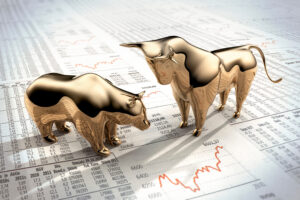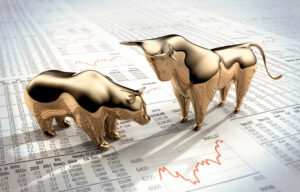Risk assets attempted to rebound last week from deeply oversold levels on hopes that central banks will soon tone down their hawkish rhetoric. Equities started the fourth quarter on an upbeat note after one of the worst Septembers on record due to oversold technical conditions, negative sentiment, and the hope (probably misplaced) that the Fed may be closer to the end of rate hikes. A durable rally in equity prices is unlikely until reported inflation cools sufficiently to enable the Fed and other global central banks to tone down their hawkish rhetoric and move to a less aggressive pace of interest rate hikes, or even a pause in the rate-hiking cycle.
Although a U.S. recession has not been our base-case scenario, the odds of this outcome have been increasing and will ratchet higher if the uptrend in bond yields does not sustainably pause. Equity valuations have already discounted a mild economic downturn, but without central banks shifting to a less hawkish policy stance, there is no obvious catalyst to improve sentiment. As a result, stock prices could undershoot underlying fundamentals before finding their footing. Accordingly, investors should remain patient in deploying capital.
Among all the fear and market carnage created by ongoing and aggressive Federal Reserve actions, investors should not lose sight of three important positives for the stock market. First, “peak inflation” has historically proved to be a good buying opportunity for stocks. From the 17 previous peaks in the CPI inflation rate since 1940, the S&P 500’s average-annualized-forward price gain was 13.2% in the coming year. It was still +8.8% if a recession resulted (which occurred eight of the 17 times) and was +17.2% without a recession. Peak inflation is often associated with improved confidence and peak yields. Indeed, S&P 500 one-year price gains following the three major inflationary tops of the 1970s-80s (February 1970, November 1974, and March 1980) were, respectively, +8.1%, +30.4%, and +33.2%! Those “post-inflation-peak” returns were earned despite a recession occurring in each case.
Second, like Main Street, Wall Street confidence is depressed. Investor sentiment measures are suggesting extreme pessimism and potentially washed-out selling. Nervous Nellies have had ample opportunities to sell out this year. How many sellers are still left? The CNN Fear & Greed Index is currently at 19—an “extreme fear” reading. The AAII Bulls Less Bears is -43.2—one of the lowest in its history. The institutional Bull/Bear Ratio is less than 1.0—an “excessive fear” reading. And, finally, the VIX Volatility Index® is currently at a relatively high 32.45 while the CBOE Put/Call Ratio is 1.02—the highest since March 2020. Those measures do not guarantee the lows are in, but they do imply we are probably getting close.
Finally, stock market valuations are very reasonable. At about 17x trailing EPS, the S&P 500 P/E multiple is now lower than about 70% of the time since 1990. Only during the immediate aftermath of the 2008 financial crisis did it sustain at a level much below 17x. For example, since 1990, the S&P 500 P/E multiple has been less than 15x EPS only 10.5% of the time. Therefore, the downside risk for valuations now appears quite modest while the upside potential is attractive.
Although the Fed is seemingly on a war path—desperately trying to imitate Paul Volcker—and the risk of a recessionary outcome is growing daily, stock investors may want to fight the urge to entirely run away from the stock market.
The lows may not yet be in, but they are probably close. The stock market has been declining all year and is already off by about 25%, which discounts a lot of potentially bad outcomes. Nervous investors have had several opportunities to exit stocks this year—how many sellers could there still be? Inflation has peaked and is decelerating, which should become more and more obvious in the months ahead.
There are a number of unconventional buffers protecting investors against a prolonged and deep recession, including strong private-sector balance sheets, a pristine banking industry, substantial untapped liquidity and savings, Main Street confidence that could improve as a recession unfolds, and continued supply-side recovery to help offset any further demand destruction. Pessimism and fear are already very evident on Wall Street, and the S&P 500 is cheaper than 70% of the time since 1990.








